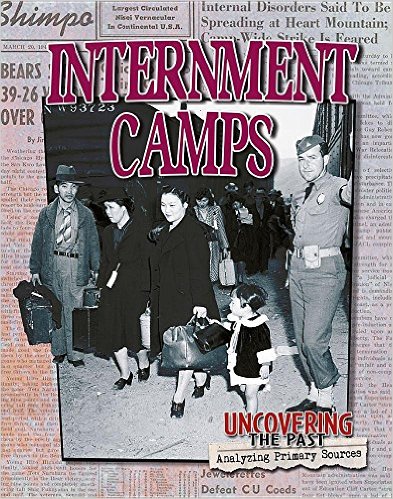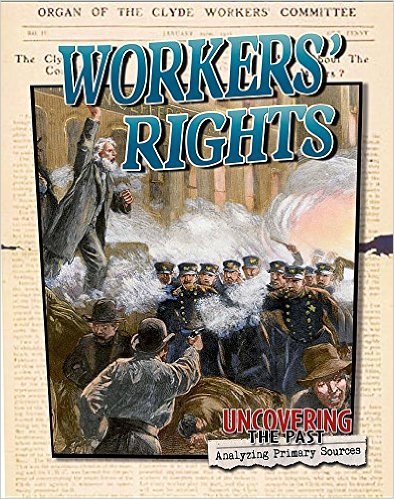| ________________
CM . . .
. Volume XXIII Number 8. . . .October 28, 2016
excerpt:
The latest two books in the “Uncovering the Past: Analyzing Primary Sources” series, “Internment Camps and Workers’ Rights, help students investigate two important historical experiences, including a close look at the immigrant experience. These are amazing resources to teach students not only about these periods in our history but more importantly about how to think critically about the ‘evidence’. Crabtree Publishing’s promotional literature sums it up well. “Readers will learn about bias, prejudice, and the denial of evidence, and learn how to use critical thinking in their own examinations.”
Internment Camps examines the events leading up to the forced relocation of thousands of Canadian and American citizens from their homes during World War II. Examining source material gives young researchers an excellent opportunity to understand bias.
In the final chapter, “Modern Examples”, Islamophobia today is compared to the fear and hate of people of Japanese origin during World War II. A text box asks readers to
Workers’ Rights” takes a complex struggle and sets it in a historical context, tracing the movement from the Industrial Revolution in the early 1800s to the modern day fight for workers’ rights in our international economic environment. The timeline for this topic included near the back of the book shows a very interesting perspective on the development of workers’ rights in Canada compared to in the United States. Primary and secondary source material looks at the workers’ experiences from the perspectives of different worker segments: men, women, children, and immigrants. For example, readers are asked to look at a “Time Table of the Holyoke Mills” from 1853, and
In the final chapter, “Modern Examples”, looks at today’s fight for Fair Trade. “Fair trade is the purchase of goods for fair prices from workers or farmers worldwide.” The most current example is “In 2016, the Alberta government in Canada passed the Enhanced Protection for Farm and Ranch Workers Act to protect paid workers on Alberta farms and ranches. The new law will set minimum hours, wages, and safety conditions to be met by employers in this industry.” Like the previous books in the series, “Uncovering the Past: Analyzing Primary Sources”, both Internment Camps and Workers’ Rights will be important resources to help students improve their skills in examining evidence critically for bias, reliability, prejudice and the denial of evidence. Highly Recommended. Suzanne Pierson is a retired teacher-librarian, currently instructing librarianship courses at Queen’s University in Kingston, ON.
To comment
on this title or this review, send mail to cm@umanitoba.ca.
Copyright © the Manitoba Library Association. Reproduction for personal
use is permitted only if this copyright notice is maintained. Any
other reproduction is prohibited without permission.
Next Review | Table of Contents For This Issue - October 28, 2016 |

